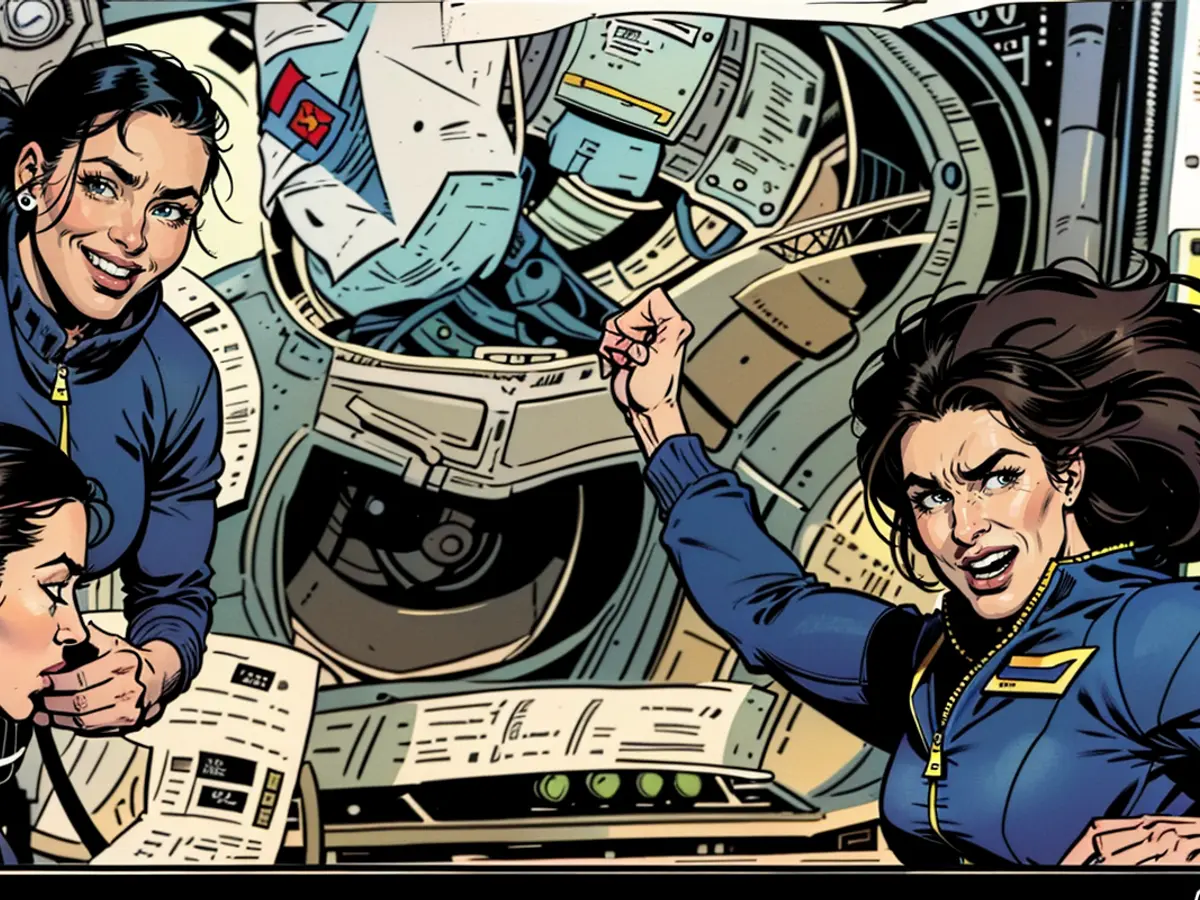First manned Starship capsule attaches to ISS despite setbacks.
Astronaut Butch Wilmore expressed his excitement about being back at the space station, as he stepped foot inside with sunny Williams by his side. The two seasoned space explorers were greeted by the other 7 crew members currently occupying the International Space Station, including Russian cosmonauts. This is their third visit to the space station for both Wilmore and Williams.
Their launch in the Starliner capsule from the Kennedy Space Center in Florida wasn't without its hitches. It had to be postponed on several occasions due to technical issues before finally taking off successfully on a Wednesday. But even during the journey, the capsule faced further difficulties in the form of helium leaks and issues with the jets that help fine-tune its position during docking with the space station.
Despite these concerns, Boeing manager Mark Chappi reassured everyone that these problems were minor and would be addressed before the next Starliner mission.
Five out of the 28 correction jets that assist with precision during docking experienced malfunctions. However, four of them were restarted successfully, making the docking process somewhat tardy, as it happened at 19:34 CEST, a full hour and 20 minutes later than planned. Two hours later, the airlock on the space station released to welcome the two new crew members.
Apart from the failure of five jets, the crew and engineering teams from NASA and Boeing will also need to delve deeper into the root causes of the four helium leaks that occurred throughout the trip. Chappi and NASA manager Steve Stich agreed that there was no link between the two issues.
Actually, one of the leaks was discovered before the departure - after the first cancelled attempt - and was considered negligible as the amount of escaping helium was well below safety limits. Therefore, the decision was made to proceed with the flight without repairing the leak.
Another two helium leaks arose during the entire journey, while the fourth was discovered once they reached the space station. Fortunately, helium is not a flammable gas, but it pays a crucial role in the propulsion of a spacecraft. It was believed that there was still enough helium to sustain them for the current mission.
For the span of their approximately one-week stay, Wilmore and Williams will work with the crew to carry out additional tests and address any issues found in the capsule before boarding the Starliner back to Earth. NASA aims to incorporate the Starliner capsule in their fleet as a secondary mode of transportation for astronauts to the ISS, alongside Elon Musk's Dragon capsule from SpaceX.
The previous attempts to launch the Starliner were thwarted by technical mishaps - twice in May and once in May.
The uncrewed test run in 2019 experienced setbacks due to a software error, causing the capsule to stray away from its intended orbit and return to earth prematurely without docking at the ISS. In 2021, a launch had to be postponed because of plugged valves. However, in May 2022 the Starliner finally achieved a successful docking with the ISS. The first crewed flight was long overdue due to various glitches and is now complete.
Read also:
- Suni Williams, a seasoned space explorer, experienced the excitement of her third visit to the International Space Station (ISS) during the first manned Starliner flight.
- Despite facing issues during the launch and throughout the journey, such as helium leaks and malfunctioning jets, the Starliner finally attached to the ISS on a Wednesday.
- Boeing manager Mark Chappi assured everyone that the problems encountered during the Starliner's first manned flight were minor and would be addressed for future missions.
- The successful docking of the Starliner capsule with the ISS took place at 19:34 CEST, a full hour and 20 minutes later than planned, due to the jets malfunctions.
- NASA and Boeing teams will investigate the root causes of the four helium leaks that occurred during the Starliner's first manned flight, ensuring the safety of future missions.
- The Starliner, developed by Boeing, is set to join NASA's fleet as a secondary mode of transportation to the ISS, alongside Elon Musk's Dragon capsule from SpaceX, following the successful completion of its first manned flight.







